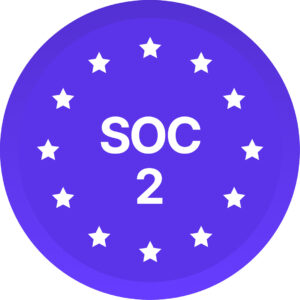In 2022, I was working with a healthtech company that had everything going for it. Incredible eNPS scores, glowing Glassdoor reviews, and explosive COVID-era growth as healthcare went digital. Their theory was simple: build a culture where people felt excited and motivated organically through autonomy and great perks.
And for a while, it worked brilliantly. People were genuinely excited about their work. The culture felt joyful, energetic, collaborative. Investors loved the engagement metrics almost as much as the growth numbers.
But when competition exploded and pressure mounted, reality hit hard. People who had previously been excited suddenly felt overwhelmed. Culture tanked as the company struggled to pivot.
Despite 200+ employees and impressive revenue growth, this company was bleeding talent at a 34% annual rate. Promising hires would join excited about the mission, only to leave within 18 months citing unclear advancement criteria and feeling excluded from key decisions. They discovered what many others learned the hard way: culture had been their strategy, but they needed actual strategy and systematic leadership capabilities to execute it. Innovation plateaued. Growth declined. The company didn’t recover.
The problem isn’t that culture work doesn’t matter. The problem is treating culture like marketing copy instead of what it actually is: mission-critical business infrastructure.
The Performance Gap: Why Culture-as-Feelings Fails
As someone who spent years at McKinsey analyzing organizational performance before founding Diversio, I’ve seen this pattern repeatedly across industries. Companies invest heavily in culture initiatives that focus on perception rather than systems. They measure how employees “feel” about culture instead of measuring the actual mechanics that produce cultural outcomes.
This is like trying to improve application performance by changing the user interface instead of optimizing the database architecture. You might get some short-term satisfaction scores, but the underlying performance problems persist.
The data is unambiguous: companies with systematic culture infrastructure see 4x revenue growth compared to those without. But “systematic culture” doesn’t mean better employee appreciation events. It means building measurable, repeatable processes that consistently produce inclusive, high-performance outcomes.
At Diversio, we’ve analyzed culture data from thousands of organizations across 30 countries. What we’ve learned is that culture lives in your systems, not your slogans.
Performance = Culture × Development
When culture is strong, training investments deliver breakthrough results. When culture is weak, even the best programs fall flat. This multiplication effect explains why the same leadership development program can transform teams in one company while failing completely in another.
At Diversio, we’ve analyzed employee feedback across the S&P 500, FTSE 100, and TSX 60. The three biggest culture pain points employees cited were adequate resourcing, team-building and team dynamics, and career development opportunities. Not purpose statements. Not innovation labs. Not wellness programs. The fundamentals: having what you need to do your job, working well with teammates, and opportunities to grow.
While companies were investing billions in culture programming, their employees were struggling with basic operational and developmental infrastructure.
Where Culture Actually Lives: The Infrastructure Layer
Real culture exists in the infrastructure that determines how work gets done:
Decision-Making Architecture: Who gets invited to strategic planning sessions? How are promotion decisions actually made? Are advancement criteria transparent and consistently applied across all employee groups? These aren’t “soft” cultural questions. They’re infrastructure questions that directly impact business performance and talent retention.
Performance Measurement Systems: How do you measure contribution? Are your performance evaluations based on clear, objective criteria, or are they influenced by proximity bias and unconscious favoritism? Research consistently shows that inclusive performance systems directly correlate with financial outperformance.
Information Distribution Networks: How does information about opportunities, strategic changes, and career advancement flow through your organization? Do all employees have equal access to growth-enabling information, or do some groups systematically receive better intelligence? This isn’t about fairness as a concept. This is about optimizing your talent pipeline.
Feedback Loop Mechanics: How quickly can employees identify performance gaps and course-correct? Are feedback mechanisms bidirectional, or do they only flow top-down? Companies with effective feedback infrastructure see 12.5% lower turnover and significantly higher productivity metrics.
As I discussed in my piece on navigating DEI strategy shifts, the companies that maintain strong performance during uncertain times are those that have built culture as systematic infrastructure rather than reactive initiatives.
The Performance Culture Framework
Through our research partnerships with universities and published validation in the International Journal of Information, Diversity, & Inclusion, we’ve identified the precise components that create high-performance cultures:
Culture = Motivation × Inclusion
Where Motivation consists of four systematic drivers:
- Purpose: Clear connection between daily work and meaningful impact
- Autonomy: Appropriate decision-making authority and control over methods
- Clarity: Transparent expectations and success metrics
- Recognition: Performance-based acknowledgment tied to business outcomes
And Inclusion comprises three foundational elements:
- Belonging: The emotional foundation that enables authentic contribution
- Safety: The psychological foundation that enables innovation and truth-telling
- Flexibility: The practical foundation that enables sustainable performance
Most failed culture initiatives we witnessed were addressing only part of this equation. Purpose teams were trying to build motivation without inclusion systems. Bias training was attempting inclusion without motivation. Innovation labs were creating excitement without systematic development opportunities.
Real-World Culture Infrastructure: The Multiplication Effect
That healthtech company I mentioned? They had optimized for one aspect of culture (motivation and excitement) while neglecting the systematic capabilities needed to execute under pressure. They treated culture as feelings rather than infrastructure.
In contrast, let me share an example from our systematic culture measurement work that shows what happens when you build culture infrastructure correctly.
A global automotive parts manufacturer had one of the highest employee engagement scores we’d ever measured: 9.55 out of 10. People loved coming to work. They enjoyed their colleagues. Team-building scores were exceptional. But their leadership and management scores? 1.34 out of 10. Among the lowest in our entire database.
When we analyzed the qualitative feedback, the story became clear. Employees genuinely enjoyed their day-to-day experience. The workplace was friendly, collaborative, supportive. But they had no drive to excel, exceed expectations, or grow within the organization. They weren’t pushing for promotions, seeking stretch assignments, or challenging themselves to improve performance.
They were engaged but not motivated.
This distinction matters more than most leaders realize. Engagement measures how people feel about work. Motivation determines what drives them to excel. When both elements work together with clear direction and development opportunities, you get exceptional productivity. When they don’t align, you get either comfortable complacency or unsustainable intensity.
Our research consistently shows that motivated employees are three times more likely to engage with inclusion efforts and five times more likely to succeed in development programs. This wasn’t just our observation. Decades of research from Harvard, Google, and Gallup confirms the same pattern.
Building Culture Infrastructure That Scales
From my experience working with organizations from startups to Fortune 500 companies, culture infrastructure must be designed for scale from day one. This means building systems that function effectively whether you have 50 employees or 5,000.
- Start with Data Architecture: Before implementing any culture initiatives, establish systematic measurement capabilities. You need baseline data on current decision-making patterns, performance evaluation consistency, and inclusion outcomes. Our analytics platform helps organizations establish this foundation quickly.
- Design for Systematic Consistency: Culture systems should produce consistent outcomes regardless of individual manager preferences or leadership changes. This requires building processes that systematically generate inclusive, high-performance results.
As we’ve seen with recent employment equity compliance requirements, proactive culture systems provide significant competitive advantages over reactive approaches.
- Integrate with Operational Systems: Culture infrastructure should connect seamlessly to your existing performance management, hiring, and strategic planning processes. In our work helping organizations move from compliance to culture, we’ve seen that data-driven culture systems consistently outperform intuition-based approaches by significant margins.
- Plan for Continuous Optimization: Like any business-critical infrastructure, culture systems require ongoing performance monitoring and improvement. Build in regular assessment cycles and data-driven iteration protocols.
The Business Case: Performance Infrastructure Returns
The companies that avoided the broader culture crisis understood this multiplication effect. They didn’t just run culture programs. They built culture systems. They didn’t just invest in engagement. They created conditions where engagement could translate into performance.
When you optimize culture systems, you optimize business performance:
- Reduced Capital Drain: Companies with systematic culture infrastructure see 40% lower turnover, which translates directly to reduced hiring and training costs. For a 200-person company, this typically represents $1.2M+ in annual savings.
- Accelerated Innovation Cycles: Teams with inclusive decision-making infrastructure generate 19% higher revenue from new products and services. This isn’t about diversity for diversity’s sake. This is about optimizing decision-making quality through systematic inclusion.
- Enhanced Risk Management: Organizations with culture measurement systems identify and address potential issues before they become legal liabilities, regulatory violations, or reputation crises.
Consider the impact we measured after helping clients implement systematic culture infrastructure. One financial services firm reduced turnover by 41% within eight months after implementing transparent advancement frameworks and consistent performance evaluation processes. More importantly for their business trajectory, product development velocity increased by 23% as teams began collaborating more effectively across previously siloed functions.
This isn’t correlation. When you optimize culture systems, you optimize business performance across every key metric that matters to stakeholders.
Building Scalable Development Infrastructure
Culture is just half the performance equation. The other half is development. Even highly motivated people in inclusive environments will underperform if they can’t grow their capabilities and advance their careers.
Development = Training × Opportunity
Most organizations invest heavily in training programs but fail to create systematic opportunities for people to apply and grow those skills. You can teach someone how to lead, but if they’re never given a chance to manage, those skills atrophy. You can train someone in data literacy, but if they’re not invited to strategy meetings or empowered to act on insights, the learning goes unused.
As I’ve written about building inclusive leadership pipelines, the companies that systematically address development infrastructure see measurable improvements in leadership development, innovation capacity, and overall business performance.
This brings us back to our Master Formula: Performance = Culture × Development, where culture provides the systematic conditions for people to contribute their best work, and development provides the capabilities and opportunities to grow that contribution over time.
The Future of High-Performance Organizations
The organizations that will dominate their markets over the next decade won’t be those with the most inspiring mission statements or creative employee perks. They’ll be the companies that treat culture as sophisticated performance infrastructure, systematically designed to produce consistent, scalable, high-performance outcomes.
This transition from culture-as-inspiration to culture-as-infrastructure isn’t just about creating more inclusive workplaces (though that’s a critical outcome). It’s about building organizations that can scale efficiently, innovate consistently, and adapt rapidly to changing market conditions.
In my work with organizations globally, I’ve seen that culture is either systematically engineered to produce the outcomes you need, or it’s accidentally producing outcomes that undermine your business objectives. There’s no neutral middle ground.
Your culture exists whether you design it intentionally or not. The question is whether you’re engineering it systematically to drive business performance, or whether you’re letting it evolve accidentally while wondering why your best talent keeps leaving.
In today’s competitive talent market, that distinction determines which companies scale and which companies struggle to maintain their growth trajectory. The companies that understand culture as performance infrastructure will have systematic advantages that compound over time, while those that treat it as feelings or perks will continue to see disappointing returns on their culture investments.
Ready to transform your culture from guesswork to systematic performance infrastructure? Discover how our data-driven culture systems can reduce turnover by up to 41% while accelerating innovation cycles.
Reach out to us at hello@diversio.com.

